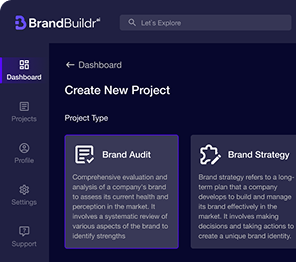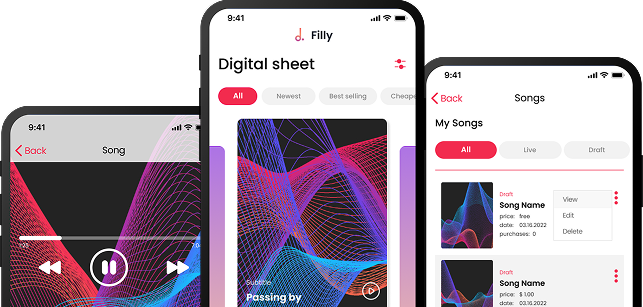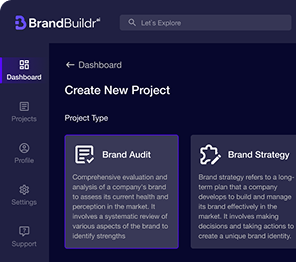The way we stay fit has changed dramatically. Instead of relying solely on gym memberships or workout DVDs, people now turn to their smartphones for guidance, motivation, and community. Fitness apps have become a daily companion for millions, helping users set goals, track progress, and even connect with like-minded individuals around the world. But with so many options available, it’s not enough for a fitness app to simply exist. The real challenge is building an app that users love, return to again and again, and are willing to invest in. That’s why the smartest fitness brands and startups focus not just on flashy features, but on thoughtful strategies that keep users engaged and drive real revenue growth.
This comprehensive guide explores the most effective mobile app development strategies for fitness apps, focusing on user retention, engagement, and monetization. Whether you’re developing a fitness app from scratch or optimizing an existing product, these insights will help you build a successful, revenue-generating platform.
%20(1).png)
Why Fitness Mobile Apps are Key to the Health & Wellness Industry
The health and wellness industry has seen a digital revolution, with fitness mobile app development at its core.
Over the past decade, the global fitness app market has experienced exponential growth, driven by technological advancements, changing consumer behaviors, and an increased focus on personal well-being.
Market Statistics and Trends:
- Explosive Market Growth: According to Statista, revenue is expected to show an annual growth rate (CAGR 2025-2029) of 4.91%, resulting in a projected market volume of US$10.06bn by 2029.
- Rising Smartphone Penetration: In the United States, 91% of adults own a smartphone, showing significant growth from just 35% in 2011.
- Pandemic-Driven Demand: The COVID-19 pandemic accelerated the adoption of digital health solutions. Fitness app downloads surged by 46% in 2020, as gyms closed and users sought at-home workout options.
- Diverse User Demographics: Fitness apps now cater to a wide range of users, from beginners to elite athletes, and from young adults to seniors.
Why Developing a Fitness App is Strategic
- Personalization: Users expect tailored workout plans, nutrition advice, and progress tracking.
- Convenience: Fitness apps allow users to exercise anytime, anywhere, without the need for expensive gym memberships.
- Community: Many apps foster a sense of community, providing social features, challenges, and support networks.
.png)
Developing a fitness app is now a strategic move for health brands, gyms, and entrepreneurs aiming to tap into a health-conscious, tech-savvy audience.
Key Features to Include in a Fitness Mobile App
When developing a fitness app, incorporating the right features is crucial for both user satisfaction and long-term retention. Here are the essential features every successful fitness app should offer:
1. User Profiles and Personalization
Allow users to create personalized accounts where they can set fitness goals, track achievements, and input personal data such as age, weight, height, and fitness level. This data enables the app to deliver tailored recommendations and monitor progress.
2. Comprehensive Workout Plans
Offer a wide variety of workout routines, including strength training, cardio, yoga, HIIT, and more. Plans should cater to different fitness levels and goals, such as weight loss, muscle gain, or improved flexibility.
3. Activity and Progress Tracking
Integrate with smartphones and wearable devices to monitor steps, calories burned, heart rate, and other metrics. Provide users with visual progress charts, daily/weekly summaries, and achievement milestones.
4. Push Notifications and Reminders
Send timely reminders for scheduled workouts, hydration, or rest days. Personalized notifications can encourage consistency and motivate users to stay on track.
5. Community and Social Features
Enable users to connect with friends, join fitness challenges, share achievements, and participate in leaderboards. Social engagement increases motivation and accountability.
6. In-App Support and Guidance
Provide access to certified trainers, nutritionists, or AI-powered chatbots for real-time assistance. Offer instructional videos, FAQs, and live classes for added value.
7. Integration with Health Platforms
Sync data with Apple Health, Google Fit, Fitbit, and other platforms for a seamless user experience and comprehensive health tracking.
8. Nutrition and Meal Planning
Include meal tracking, calorie counting, and personalized nutrition plans. Users appreciate holistic wellness solutions that address both exercise and diet.
9. Customizable Settings
Allow users to adjust app settings, such as notification preferences, workout intensity, and display options, to suit their individual needs.
By focusing on these core features, developers can create engaging, user-friendly fitness apps that cater to a diverse user base and foster long-term loyalty.

Effective Strategies to Improve User Retention in Fitness Apps
Fitness app user retention is the cornerstone of long-term success.
High download rates are meaningless if users abandon the app after a few sessions.
The key is to implement retention strategies for mobile apps that foster ongoing engagement and loyalty.
Leveraging Gamification for Better Engagement
Gamification is a powerful tool for driving user engagement in fitness apps. By incorporating game-like elements, developers can make workouts more enjoyable, motivating, and rewarding.
%20(1).png)
Popular Gamification Elements:
- Achievement Badges: Reward users for reaching milestones, such as completing a certain number of workouts or achieving a personal best.
- Leaderboards: Foster friendly competition by ranking users based on activity, consistency, or progress.
- Daily/Weekly Challenges: Encourage users to participate in time-bound challenges, such as “7-Day Step Challenge” or “Monthly Workout Streak.”
- Virtual Rewards: Offer points, coins, or unlockable content for achieving goals, which can be redeemed for in-app perks or discounts.
- Progressive Levels: Allow users to “level up” as they complete workouts and challenges, unlocking new features or content.
Benefits of Gamification:
- Increased Motivation: Users are more likely to stick with their fitness routines when they feel rewarded and recognized.
- Habit Formation: Regular challenges and rewards help users form healthy habits.
- Social Engagement: Leaderboards and challenges encourage users to invite friends and share achievements.
Personalization Features That Keep Users Coming Back
Personalization is at the heart of effective user engagement in fitness apps. Tailoring the app experience to individual preferences and goals leads to higher satisfaction and retention.
Key Personalization Strategies:
- Custom Workout Recommendations: Use AI or machine learning to suggest routines based on user data, preferences, and progress.
- Adaptive Goal Setting: Adjust goals dynamically as users improve, ensuring continued challenge and growth.
- Personalized Notifications: Send reminders and encouragement tailored to the user’s activity patterns and preferences.
- Content Customization: Allow users to choose workout types, music, trainers, and difficulty levels.
- Behavioral Analytics: Leverage user data to identify patterns and deliver targeted content or offers.
Retention Strategies for Mobile Apps:
- Regular Content Updates: Add new workouts, challenges, and features to keep the app fresh and exciting.
- User Feedback Loops: Encourage users to provide feedback and suggestions, demonstrating that their opinions matter.
- Onboarding Tutorials: Guide new users through the app’s features, ensuring a smooth and enjoyable first experience.
- Incentives for Consistency: Offer rewards or discounts for users who maintain regular activity.
By implementing these retention strategies, fitness apps can foster long-term engagement and build a loyal user base.

Monetization Strategies for Fitness Apps to Drive Revenue
Building a popular fitness app is only half the battle; turning that popularity into sustainable revenue is the next challenge. Effective fitness app monetization requires a careful balance between generating income and maintaining a positive user experience.
Subscription-Based Models vs. In-App Purchases
Subscription-Based Models
Subscriptions are the most popular revenue strategy for fitness apps, offering users access to premium content, advanced features, or expert guidance for a recurring fee.
Benefits:
- Predictable Revenue: Monthly or yearly subscriptions provide steady income.
- Enhanced User Commitment: Subscribers are more likely to engage consistently.
- Tiered Offerings: Offer basic, premium, and VIP tiers to cater to different budgets.
- Exclusive Content: Provide subscribers with access to exclusive workouts, nutrition plans, or live classes.
Best Practices:
- Free Trials: Offer a 7- or 14-day free trial to encourage users to experience premium features.
- Flexible Plans: Provide monthly, quarterly, and annual subscription options.
- Transparent Pricing: Clearly communicate the value and benefits of each subscription tier.
In-App Purchases
Alternatively, apps can offer one-time purchases for specific features or content.
Examples:
- Exclusive workout plans
- Personalized coaching sessions
- Nutrition guides or meal plans
- Virtual goods (badges, avatars, etc.)
Advantages:
- Flexibility: Users can choose to pay only for the features they value.
- Upsell Opportunities: Encourage users to upgrade or purchase additional content as they progress.
Combining Models
Many successful fitness apps combine subscriptions with in-app purchases, appealing to both casual and dedicated users.
How to Use Ads Without Disrupting User Experience
Advertising is another revenue stream for fitness apps, but it must be handled delicately. Poorly placed or excessive ads can frustrate users and lead to churn.
Best Practices for Ad Monetization:
- Native Ads: Integrate ads that match the app’s look and feel, minimizing disruption.
- Rewarded Ads: Allow users to watch ads in exchange for in-app rewards, such as unlocking premium content or earning virtual currency.
- Limit Ad Frequency: Avoid bombarding users with ads; prioritize quality over quantity.
- Ad-Free Upgrades: Offer a paid, ad-free version for users who prefer uninterrupted experiences.
- Relevant Partnerships: Partner with brands that align with your app’s mission and audience, ensuring ads are relevant and valuable.
The key to successful fitness app monetization is to balance revenue generation with user satisfaction.
Prioritize user experience, and ensure that monetization strategies enhance, rather than detract from, the app’s value.
Best Practices for Scaling Your Fitness Mobile App
As your user base grows, your app must be able to handle increased demand without sacrificing performance or reliability. Scalability is a critical factor in successful fitness mobile app development.
Building a Scalable Infrastructure for Growth
A robust, scalable infrastructure ensures your app remains fast and reliable as it attracts more users. Consider these best practices:
1. Cloud-Based Servers
Utilize cloud platforms such as AWS, Google Cloud, or Azure for flexible scaling and cost efficiency. Cloud infrastructure allows you to quickly add resources as user demand increases.
2. Load Balancing
Distribute user traffic across multiple servers to prevent bottlenecks and ensure smooth performance, even during peak usage times.
3. Database Optimization
Use efficient data structures, indexing, and caching to speed up data retrieval. Regularly optimize your database to handle large volumes of user data.
4. Regular Updates and Maintenance
Continuously improve app performance, fix bugs, and add new features based on user feedback. Regular updates keep the app secure and up-to-date.
5. Security and Compliance
Protect user data with encryption, secure authentication, and compliance with health data regulations such as HIPAA and GDPR. Security is paramount in fitness apps that handle sensitive health information.
6. Automated Testing and Monitoring
Implement automated testing and real-time monitoring to quickly identify and resolve issues. Proactive monitoring ensures high availability and reliability.
Marketing Tactics to Increase User Acquisition
Attracting new users is as important as retaining existing ones. Effective marketing strategies for fitness apps include:
1. App Store Optimization (ASO)
Use relevant keywords, compelling descriptions, and high-quality visuals to improve visibility in app stores. Encourage satisfied users to leave positive reviews and ratings.
2. Influencer Partnerships
Collaborate with fitness influencers, trainers, and health experts to reach wider audiences and build credibility. Influencers can showcase your app’s features and share authentic testimonials.
3. Content Marketing
Publish blogs, workout videos, nutrition tips, and user success stories to engage potential users and drive organic traffic. High-value content establishes your brand as an authority in the fitness space.
4. Referral Programs
Encourage current users to invite friends and family by offering rewards, discounts, or exclusive content. Referral programs leverage word-of-mouth marketing to accelerate user acquisition.
5. Social Media Campaigns
Leverage platforms like Instagram, TikTok, and Facebook to showcase app features, share user testimonials, and run targeted ad campaigns. Social media is a powerful channel for building brand awareness and community.
6. Paid Advertising
Invest in targeted ads on search engines, social media, and fitness websites to boost downloads and reach new audiences. Use data analytics to optimize ad performance and ROI.
7. Partnerships with Gyms and Health Brands
Form strategic partnerships with gyms, wellness centers, and health brands to cross-promote your app and expand your reach.
8. Events and Challenges
Host virtual fitness events, challenges, and webinars to engage users and attract new sign-ups. Events create buzz and foster a sense of community.
A multi-channel marketing approach ensures steady user acquisition and brand growth.
Final Thoughts
Fitness mobile app development is a dynamic, competitive field with immense potential for impact and profit. To succeed, developers must focus on:
- Building feature-rich, user-centric apps: Prioritize essential features such as personalized workouts, progress tracking, and community engagement.
- Implementing retention strategies for mobile apps: Leverage gamification, personalization, and regular content updates to keep users engaged.
- Balancing fitness app monetization with a seamless user experience: Choose the right revenue models, such as subscriptions and in-app purchases, and use ads judiciously.
- Ensuring scalability and robust marketing for sustained growth: Invest in scalable infrastructure, security, and multi-channel marketing to attract and retain users.
By adopting these strategies, you can create a fitness app that not only attracts users but keeps them engaged and generates consistent revenue.
Ready to turn your fitness app vision into reality? Contact our team for expert mobile app development and start building a platform that drives user retention and revenue today!
Heading 1
Heading 2
Heading 3
Heading 4
Heading 5
Heading 6
Lorem ipsum dolor sit amet, consectetur adipiscing elit, sed do eiusmod tempor incididunt ut labore et dolore magna aliqua. Ut enim ad minim veniam, quis nostrud exercitation ullamco laboris nisi ut aliquip ex ea commodo consequat. Duis aute irure dolor in reprehenderit in voluptate velit esse cillum dolore eu fugiat nulla pariatur.
Block quote
Ordered list
- Item 1
- Item 2
- Item 3
Unordered list
- Item A
- Item B
- Item C
Bold text
Emphasis
Superscript
Subscript




















.avif)

.avif)




.png)
